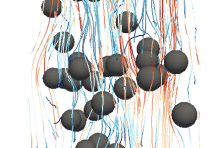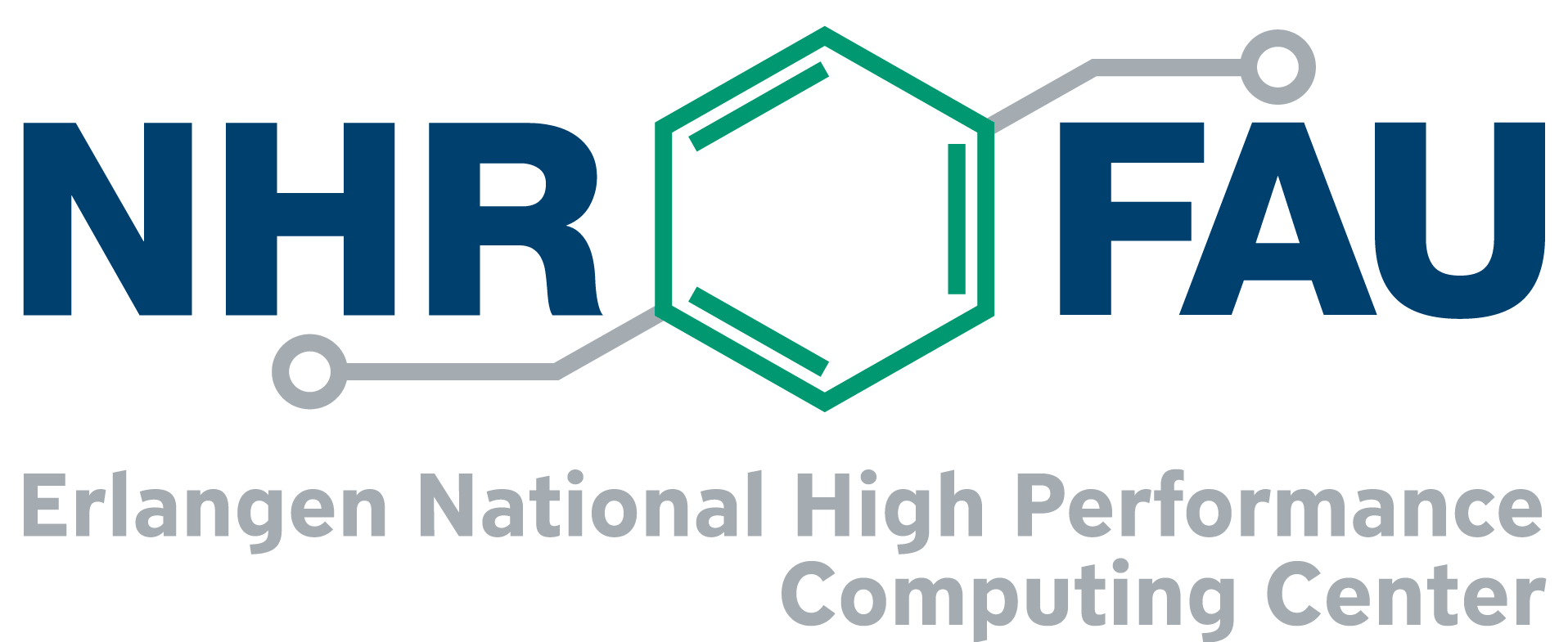HPC User Report from D. Schuster (Chair for System Simulation)
DNS of Fluidized Beds with LBM
 A series of particulate flows at microscopic level have been simulated to learn about their fluid dynamics. The results are compared to real life experiments and can ultimately be used to improve macroscopic models.
A series of particulate flows at microscopic level have been simulated to learn about their fluid dynamics. The results are compared to real life experiments and can ultimately be used to improve macroscopic models.
Motivation and problem definition
The fluidized bed reactor is a vertical particulate flow and a vastly spread tool in chemical engineering. Due to its strong intermixing, high contact surface area between solid and fluid phase and frequent collisions it is applicable for combustion, coating, catalytic cracking or drying processes. Coal combustion is still by far the largest power source in India. Improving the efficiency of fluidized bed reactors could save large amounts of natural resources.
Methods and codes
The fluid flow as well as the particle collisions are solved by the waLBerla code, which is developed at the Chair for System Simulation, Computer Science 10, Erlangen. It is a highly MPI parallel, highly optimized framework for solving the Lattice Boltzmann method (LBM) and rigid body collisions. LBM computations are by nature memory-bound. In order to create simulation scenarios that can experimentally be rebuild, it was necessary to apply several thousand particles and up to 100 million fluid cells.
Results
The simulation results made it possible to gain further insight into the dynamics of fluidized beds. We were able to analyze the effect of physical modelling approaches like the lubrication forces between particles or turbulence models. Furthermore we found a way to improve the numerical coupling at the solid-fluid interface.

Outreach
- Master thesis: https://www10.cs.fau.de/publications/theses/2017/Schuster_MT_2017.pdf
- Presentation at DSFD 2017 (together with Brajesh Singh)
Researcher’s Bio and Affiliation
Dominik Schuster graduated in Computational Engineering at the FAU Erlangen-Nürnberg. After working in the team of Prof. Ulrich Rüde, he is now working on his PhD at CERFACS and IMFT in Toulouse, France.
